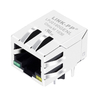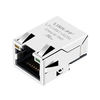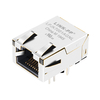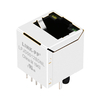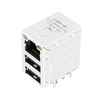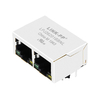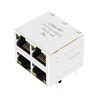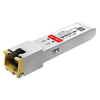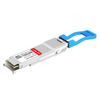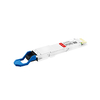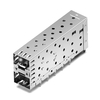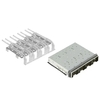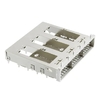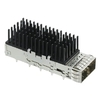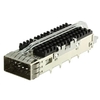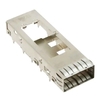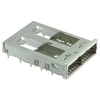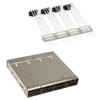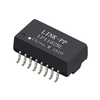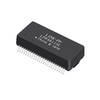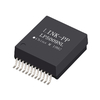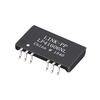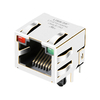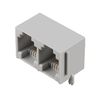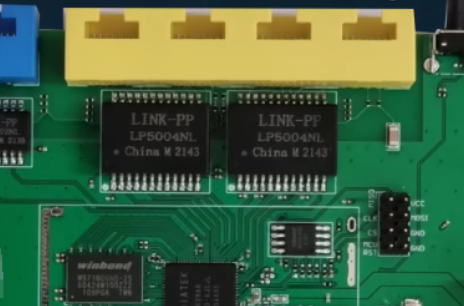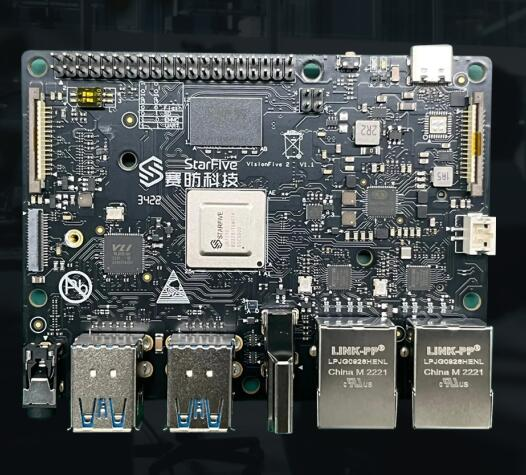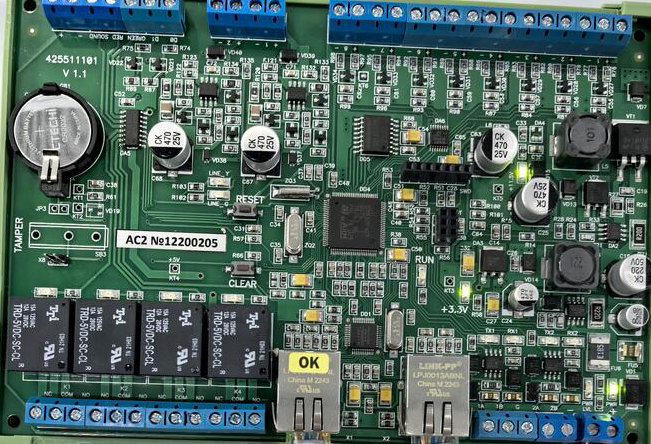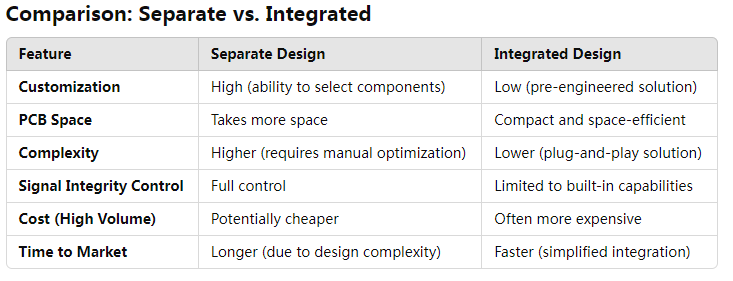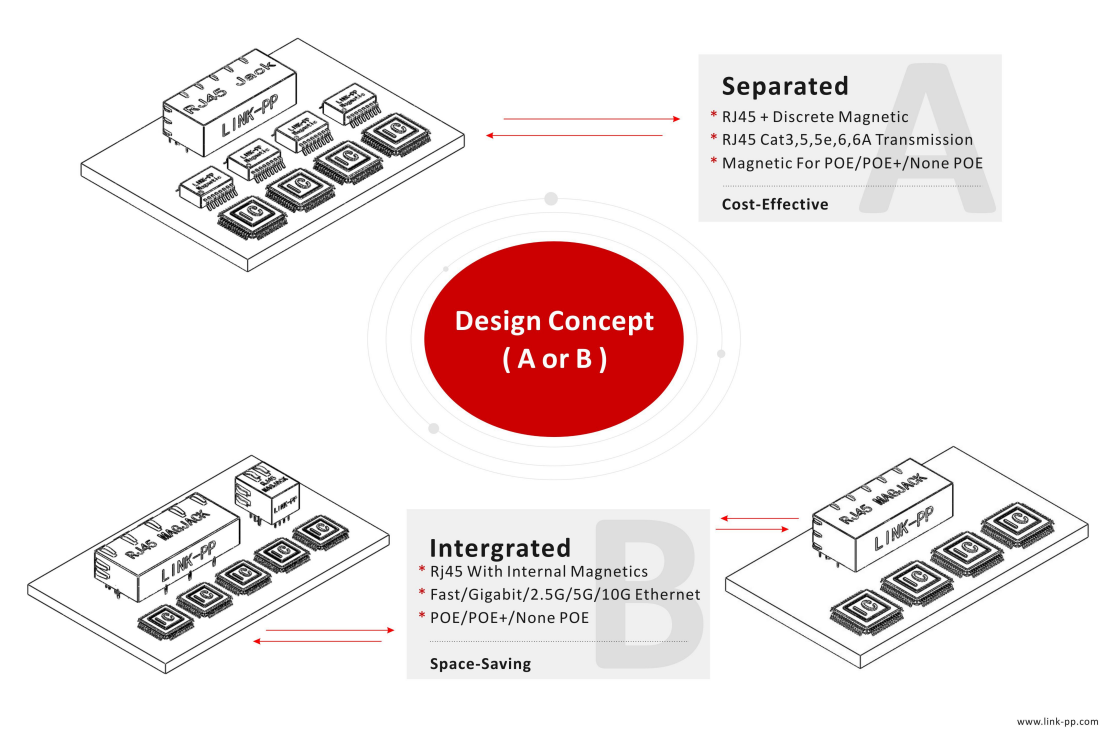Understanding RJ45 Design Solutions: Separate vs. Integrated in Project Design
In modern networking infrastructure, the RJ45 connector plays a pivotal role in establishing wired Ethernet connections. Whether you're designing a local area network (LAN) or developing new networking hardware, choosing the right RJ45 design solution is critical to meeting performance, cost, and space requirements. Two common design approaches for RJ45 connectors are **separate** and **integrated**. In this blog, we will explore the key differences, advantages, and considerations for each solution to help you decide which is best for your project.
1. Separate RJ45 Design Solution
The **separate** RJ45 design consists of individual components for the Ethernet port (RJ45 connector) and the magnetics, such as transformers and filters. These parts are usually mounted separately on the printed circuit board (PCB).
Key Characteristics
- Modular Design: The Ethernet connector and the necessary magnetics (signal transformers and filtering) are implemented as discrete components on the PCB.
- Flexibility: Offers the ability to choose specific parts to suit the needs of the project. You can select a different transformer or filtering component to enhance signal quality or cost-effectiveness.
- Cost-Effectiveness for High Volumes: In high-production volumes, sourcing separate components may lead to reduced costs, as it allows manufacturers to negotiate component prices independently.
Advantages
- Customization: Designers can tweak performance and signal integrity by selecting and optimizing each component for the desired use case.
- Maintenance and Replacement**: If a specific part, like the transformer or connector, fails, you can replace that single part instead of the entire module.
- Cost Flexibility: In large-scale projects, this approach may offer a lower cost-per-unit by sourcing parts independently.
Disadvantages
- Complexity: The separate design adds complexity to the PCB layout. Engineers must carefully manage the signal integrity, electromagnetic interference (EMI), and crosstalk between components.
- Board Space: This design generally takes up more PCB real estate because the RJ45 connector and magnetics are placed separately.
-Assembly Time: More components mean increased assembly time, which can contribute to higher labor costs during production.
When to Use:
- You need high customization in terms of signal quality, transformer performance, or filtering.
- You’re designing for a large-scale production, where component flexibility and cost optimization are key.
- Space and complexity aren’t the primary concerns.
2. Integrated RJ45 Design Solution
An integrated RJ45 design combines the Ethernet connector and the magnetics (transformers, common-mode filters) into a single unit. These pre-integrated RJ45 connectors with built-in magnetics are often referred to as MagJack connectors.
Key Characteristics
- All-in-One: The connector and signal magnetics are contained within a single unit, often in a modular design. These are plug-and-play solutions that reduce the number of discrete components required on the PCB.
- Simplified Design: With both the connector and magnetics integrated into one component, it simplifies the PCB layout process and minimizes the potential for signal integrity issues.
Advantages
- Space Saving: Integrated RJ45 solutions save valuable PCB space, making them ideal for compact designs and small form-factor devices.
- Reduced Complexity: Fewer components on the PCB means reduced design complexity, less routing of traces, and easier optimization of signal quality.
- Faster Time to Market: The simplicity of the integrated design solution often reduces development time, allowing faster deployment of products.
- Enhanced Reliability: Pre-engineered integrated modules are designed and tested to work optimally together, ensuring better signal integrity and reliability.
Disadvantages
- Limited Customization: The integrated design offers less flexibility in terms of selecting individual magnetics components. You are restricted to the performance parameters of the pre-built unit.
- Cost for Low Volume: Integrated solutions may be more expensive for low-volume projects since the modules are generally pricier than sourcing individual components.
- Replacement Complexity: If the integrated connector or magnetics fail, the entire unit typically needs to be replaced, which could increase maintenance costs.
When to Use:
- Space-saving is critical, and you need to minimize the PCB footprint.
- Simplicity and ease of design are top priorities, especially for small teams or projects with tight timelines.
- You’re working on low- to medium-volume production, where the cost of integrated modules is justified by the savings in time and labor.
Conclusion
Choosing between a separate or integrated RJ45 design solution depends on your project’s requirements. If you’re working on a high-volume product with a need for performance optimization and cost control, a separate RJ45 design could be the right choice. On the other hand, if space-saving, simplicity, and faster time to market are your priorities, the integrated RJ45 solution offers a practical, efficient, and reliable alternative.
By understanding the trade-offs of each approach, you can make an informed decision to balance cost, complexity, and performance in your next networking or electronics project. For detailed referral information, please contact the LINK-PP contact window: yoeng@link-pp.com

